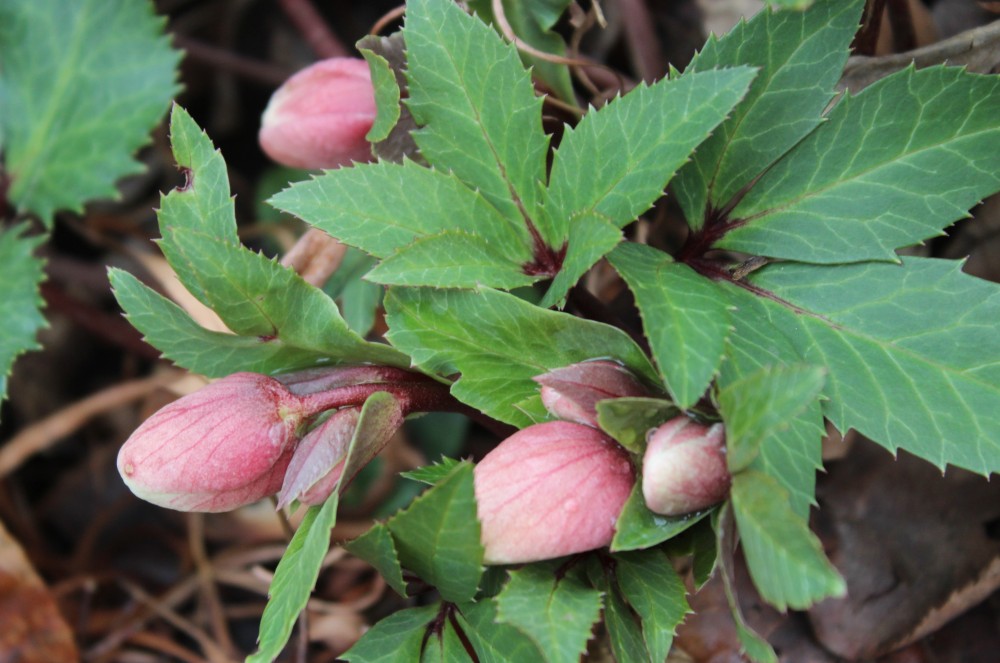Several hellebores are showing a bit of color, though flower buds could remain in this state for another six weeks, and probably will. A time, possibly two, in twenty years the same hellebores began flowering the third week of December, with full bloom following shortly before the new year. As I recall, that early winter, and I think most of the winter besides a two week period was exceptionally mild, with other hellebores following into bloom in January, and all in flower by early February.
Certainly, a splendid winter for the gardener, fondly remembered, but even as there is general warming of winters this was quite out of the ordinary. More recent winters have been milder (I cannot say warmer, since after all, it is still winter) than average, but also with extended periods below freezing, and days when temperatures approach, or drop a degree or two below zero (Fahrenheit). Given similar weather, flowers of hellebores will not open fully until at least early February. But, this bit of color gives hope, and any color in the winter months is treasured.
Oddly, two witch hazels (Hamamelis x intermedia, above) flowered on several branches a month ago, but other branches did not flower, and buds have not swelled unusually. So, some mid-winter blooms will be missed, but not enough I think, to bring disappointment. Most disappointing is that one red flowered ‘Diane’ has become overly shaded by a nearby katsura, with dead branches in the shadiest areas and few flower buds.
The Vernal witch hazel (Hamamelis vernalis, above) in the ever damp rear garden seems to have fewer flower buds than usual, but perhaps I am looking for problems. In mild early winters the witch hazel can begin flowering before the new year, but recent chilly temperatures assure that earliest blooms are likely in mid-January.
Most unusual, late autumn flowering mahonias (Mahonia x media) have not yet begun to flower in mid-December. For weeks, the yellow blooms have been ready to pop any moment, it seems, needing only a day or two of mild temperatures to open. Most often, first flowers are seen in early November, but once flowering begins it is likely to extend through much of January if winter temperatures are not too severe.
We grew those hazels back in the 1990s, but discontinued them because there was such minimal demand for them here. We grew only the cultivars, but not the Eastern witch hazel. I got some of that for my personal garden, but have not seen it do anything yet.
I find that few are as enthusiastic about wintering flowering plants as I am. Too cold to go outdoors to enjoy.
Because so many other plants bloom randomly throughout the year, winter blooming plants are no more popular than others.